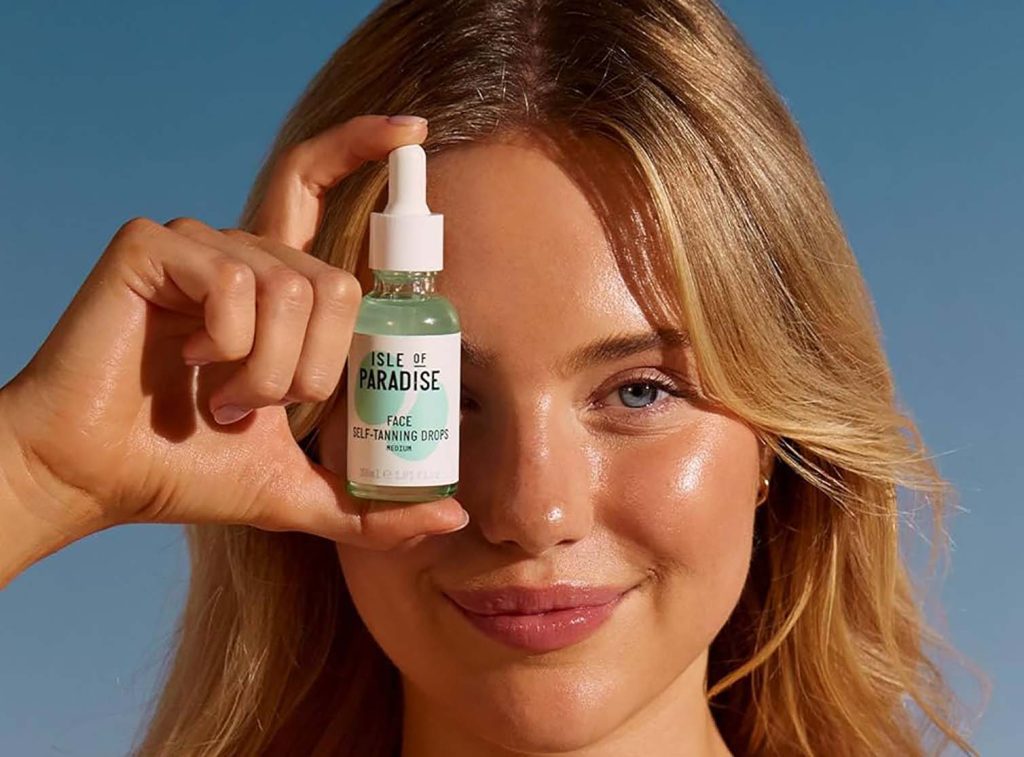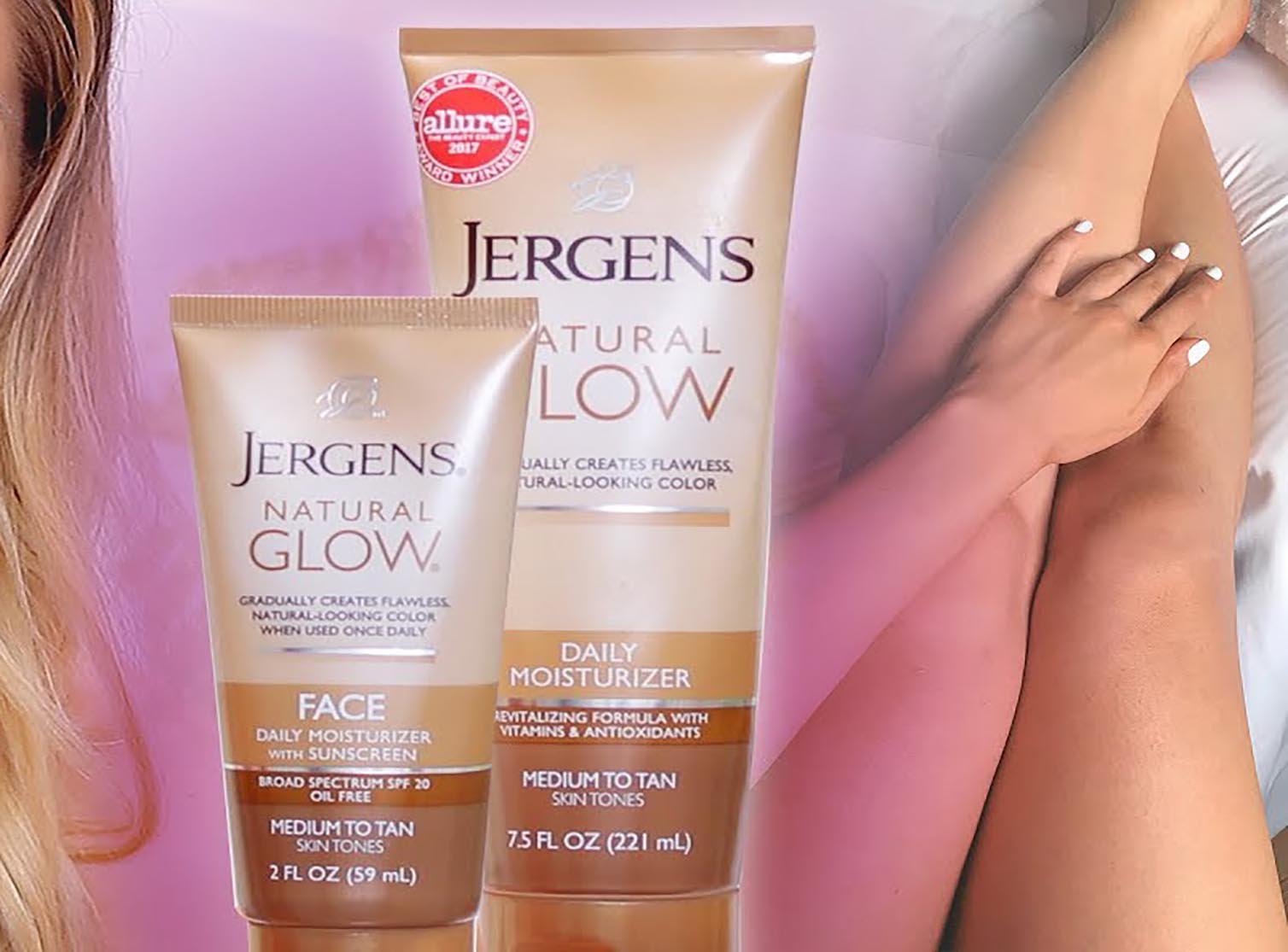It hit me on a random Tuesday, in the passenger seat of my friend’s car, when I casually flipped down the sun visor mirror and caught a glimpse of myself.
“What in the reverse tan line is going on?” I muttered, leaning closer.
My face — ghostly. Pale. Suspiciously radiant in the wrong way. The rest of me? Sun-kissed. My arms, shoulders, and neck had caught the golden glow of summer, but my face looked like it hadn’t seen daylight since early March. I was a walking, talking contrast filter. A two-tone human. And all of it was thanks to my commitment to wearing daily SPF.
Let me rewind.
The Sunscreen Overachiever Problem
I’m diligent about skincare. I read ingredients, layer my serums, and — unlike most people I know — never skip sunscreen. Every morning, I apply two generous fingers of broad-spectrum SPF 50 on my face, ears, and neck. Even if it’s cloudy. Even if I’m indoors most of the day. Even if I’m just running errands. Why? Because I’ve seen the damage. Sunspots, fine lines, and that crepey skin that sneaks up on you by your 30s.
But here’s what no one warns you about: if you’re not equally diligent with your body sunscreen — and let’s be honest, most of us aren’t — your face can end up looking like it belongs to a different person entirely.
Spot the Difference: My Face vs. My Body
I started noticing the disconnect in selfies. In person, it was subtle. But on camera, my face looked borderline porcelain while my chest and arms had clearly been enjoying rooftop brunches and beach days. I tried adjusting lighting, filters, even foundations — but nothing worked quite right. This wasn’t just a makeup mismatch; it was a skin-tone misalignment.
And here’s the thing: I wasn’t sunburned. I wasn’t even tan on purpose. I just hadn’t been reapplying SPF on my body every two hours like I was on my face. The result? My face remained untouched by the sun. My body did not.

First Thought: Fake It Till You Blend It
My initial reaction was to cheat it — to bring my face “up to tone,” so to speak. I reached for every bronzer, contour, and deep-tinted foundation in my vanity. Bad move.
You ever try to match your neck to your face with makeup and end up looking like you’re wearing a mask? That’s what happened. My forehead turned orange, my cheeks looked muddy, and I spent 20 minutes trying to fix the edges of my jawline so I didn’t have a visible stripe where the bronzer ended.
The next logical step? Leveling the body down instead.
Embrace the Glow: Evening Out Without Sun
I wanted my face and body to match, but I wasn’t going to start skipping sunscreen. So I shifted strategies. Instead of tinting my face up, I brought the rest of my body to my face’s level — softly, subtly, safely.
Here’s what helped:
1. Tinted Body Lotions
I started using gradual tanning lotions like Jergens Natural Glow (\$10 at Target or Walmart) or Tan-Luxe The Gradual (\$33 at Sephora). These products give you a soft, buildable tan — and they’re far less scary than those 2000s orange disasters.
I applied them every other day after showering, concentrating on the parts most often visible — chest, shoulders, arms. Within a week, my body tone evened out to something closer to my face.
2. Self-Tanning Face Drops
Even though my face was already lighter, I added Isle of Paradise Self-Tanning Drops (\$32 at Ulta) into my nighttime moisturizer twice a week. The beauty of these drops is that you control the intensity. A couple drops gave me just enough warmth to make my face less stark in contrast without risking breakouts or clogging my pores.
3. Glow Oils
For nights out or beach days, I reached for body glow oils like Supergoop! Glow Oil SPF 50 (\$38 at Nordstrom or Revolve). These not only protect my skin but also add a warm radiance that distracts from tonal mismatch. Think body highlight, but practical.
The Real Fix? Adjusting the Routine
No product will truly fix the problem if you don’t address the root cause: inconsistent sun protection.
Now, I keep a Neutrogena Hydro Boost SPF 30 Spray (\$11 at Walgreens) in my car and reapply it to my chest and arms during the day. I also switched to EltaMD UV Daily Broad-Spectrum SPF 40 (\$41 on Dermstore or Amazon) for my face — it’s lightweight, blends well, and gives a subtle glow without a white cast.
I even found a sunscreen brush — the Colorescience Sunforgettable Brush-On SPF 50 (\$69 at Dermstore) — that lets me reapply without messing up my makeup. Pricey, yes, but genius.
Skin Is Seasonal — and That’s Okay
One of the biggest lessons? Skin changes. It tans, it fades, it reacts to weather, stress, hormones, life. What I once saw as a problem — the paler face — is actually a testament to my consistency. My sunscreen was working. And instead of hiding that, I learned to balance it.
I now accept that I might be a little off-tone for a few weeks out of the year. That’s not failure — that’s normal. What matters is how I adjust, how I protect, and how I treat my skin afterward.
Pro Tips from the Pros
In my moment of desperation, I DM’d a makeup artist I follow. Her advice was gold:
- “Don’t try to overcorrect with bronzer. Use blush to bring life back to the face instead.”
— Especially on paler skin, blush mimics real flush. Try Rare Beauty Liquid Blush in Joy or Hope (\$23 at Sephora). - “Mix a few foundation shades. You’re not one tone year-round.”
— I started blending my summer and winter foundations: Fenty Pro Filt’r in 240 and 290 (\$40 each at Sephora) until I got the right balance. - “Use what makeup artists call the ‘Three Zone Method’ — match your face to your chest, your neck to your jawline, and everything else can be softly blended.”
— This helped me understand where to focus when doing base makeup. Game-changer.
Why It Feels So Personal
I’ll admit: it felt silly at first, how upset I was over my face not matching my body. But it wasn’t just about vanity — it was about identity. There’s something disorienting about not recognizing your own reflection. It messes with your confidence in weird ways. I’d catch myself avoiding mirrors or camera apps because I didn’t feel “put together.”
When your face looks drastically different from your body, people notice — even if they can’t pinpoint what’s off. I had someone ask if I was feeling okay. Another friend jokingly asked if I was “trying a new foundation shade.” It made me self-conscious in a way I hadn’t felt since high school.
But here’s what I’ve learned: this kind of thing happens to all of us. Hyperpigmentation, tan lines, maskne scars, hormonal breakouts — our skin is a living, shifting thing. It tells the story of how we treat it, and sometimes, that story gets uneven.
So instead of hiding it, I decided to take care of it. Tenderly, consistently, and without judgment.
What Worked Long-Term
After several weeks of experimentation, I found a routine that helped bring balance back — not just cosmetically, but emotionally.
Daily Routine for Balanced Skin Tone
Morning:
- Cleanse with a gentle, non-stripping formula like CeraVe Hydrating Facial Cleanser (\$14 at Target)
- Apply Vitamin C serum (try La Roche-Posay 10% Pure Vitamin C Serum, \$40 at Ulta)
- Moisturize with Neutrogena Hydro Boost Water Gel (\$19 at CVS)
- Finish with EltaMD UV Daily SPF 40 on the face and neck, and Neutrogena Ultra Sheer Body Mist SPF 45 on exposed areas
Evening:
- Double cleanse (especially if you wear makeup)
- Use a retinol treatment 2–3 times a week (I love Paula’s Choice Clinical 1% Retinol, \$62 at Dermstore)
- Apply hydrating serum like The Ordinary Hyaluronic Acid 2% + B5 (\$9 at Ulta)
- Moisturize generously — First Aid Beauty Ultra Repair Cream is my go-to (\$38 at Sephora)
Twice a week, I mixed in those Isle of Paradise Tanning Drops to keep things looking balanced, and once a week I used Tanologist Express Tan Mousse on my body. Affordable, fast-drying, and surprisingly natural-looking.
My Go-To Products List (U.S. Retailers)
To save you the search, here’s where you can find some of the best products that helped me:
- Amazon: EltaMD, The Ordinary, Tanologist, CeraVe
- Sephora: Rare Beauty, Supergoop!, Fenty, Isle of Paradise
- Ulta: Paula’s Choice, La Roche-Posay, Jergens Natural Glow
- Dermstore: Colorescience, EltaMD, First Aid Beauty
- Target/Walmart/Drugstores: Neutrogena, CeraVe, Jergens, Bondi Sands
Pro tip: sign up for email alerts from these retailers. I snagged most of these during sales or with discount codes. Some like Dermstore often offer 15% off for new customers.

Real Talk: You Don’t Need to “Fix” It All
I used to believe everything on my face had to match everything else. That if my skin tone shifted slightly or my blush wasn’t perfectly blended, I was doing something wrong. But the truth is — perfect skin is a myth. Even makeup artists don’t aim for “perfection” in real life. They aim for balance, for harmony, for expression.
Now, when my face is a little lighter than my chest, I don’t panic. I know I have options — from makeup to self-tanners, skincare to just… wearing higher necklines for a few days.
The key is being gentle with myself. It’s okay to look a little uneven. It’s okay to be a work in progress. And honestly? I’d rather have a brighter, protected face than one that’s sun-damaged and “matched.”
What I’d Tell You, If You’re Dealing with This Too
If you’re staring in the mirror, annoyed that your face and body are telling different stories — you’re not alone. And you’re not vain. You’re just human. You care about how you show up in the world. You’re allowed to want your face to match your neck without feeling guilty about it.
Here’s my best advice:
- Celebrate your sunscreen discipline. That lighter face? It’s a sign your SPF is working. Don’t undo that just to blend.
- Use blush and glow, not bronzer masks. Radiance reads more natural than a fake tan line painted on with powder.
- Build glow gradually. Tanning drops and lotions let you control the outcome.
- Keep sun care consistent. Your body deserves the same love your face gets.
- Embrace imperfection. It’s okay to look a little mismatched for a season.
There’s power in noticing. In saying, “Hey, something’s off,” and then choosing to do something about it — whether that’s changing your routine, trying a new product, or just shifting your mindset.
For me, that moment in the car mirror was a wake-up call — not just about my skincare, but about how closely we link our appearance to how we feel. The skin on my face was lighter because I took care of it. I started taking better care of the rest of me too. I learned to match not just my skin tone, but my intentions — inside and out.
I still wear sunscreen every day. I still catch myself in photos where my face is a little brighter than my chest. And now? I smile at it.
Because that contrast isn’t a flaw.
It’s a feature of someone who’s learning to love their skin exactly as it is.

